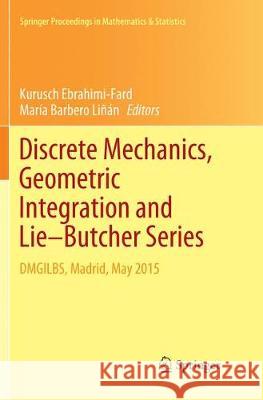Discrete Mechanics, Geometric Integration and Lie-Butcher Series: Dmgilbs, Madrid, May 2015 » książka
topmenu
Discrete Mechanics, Geometric Integration and Lie-Butcher Series: Dmgilbs, Madrid, May 2015
ISBN-13: 9783030131777 / Angielski / Miękka / 2019 / 361 str.
Discrete Mechanics, Geometric Integration and Lie-Butcher Series: Dmgilbs, Madrid, May 2015
ISBN-13: 9783030131777 / Angielski / Miękka / 2019 / 361 str.
cena 603,81
(netto: 575,06 VAT: 5%)
Najniższa cena z 30 dni: 578,30
(netto: 575,06 VAT: 5%)
Najniższa cena z 30 dni: 578,30
Termin realizacji zamówienia:
ok. 22 dni roboczych
Bez gwarancji dostawy przed świętami
ok. 22 dni roboczych
Bez gwarancji dostawy przed świętami
Darmowa dostawa!
Kategorie:
Kategorie BISAC:
Wydawca:
Springer
Seria wydawnicza:
Język:
Angielski
ISBN-13:
9783030131777
Rok wydania:
2019
Wydanie:
Softcover Repri
Numer serii:
000447439
Ilość stron:
361
Waga:
0.52 kg
Wymiary:
23.39 x 15.6 x 1.96
Oprawa:
Miękka
Wolumenów:
01
Dodatkowe informacje:
Wydanie ilustrowane











